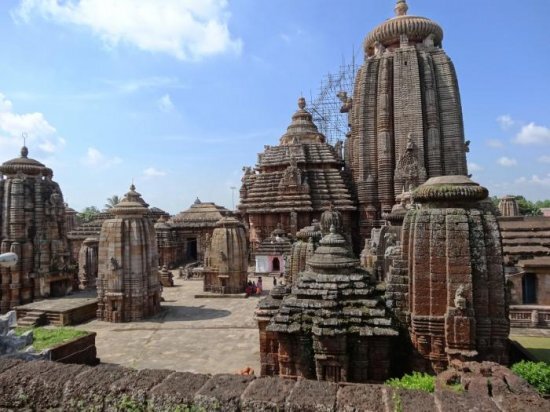Indian Heritage & Culture
Revamp of Lingaraj Temple: Odisha
- 20 Aug 2020
- 4 min read
Why in News
The Odisha government has decided to give a facelift to the 11th century Lingaraj Temple, akin to its pre-350-year structural status.
- This announcement has come despite the massive financial burden on the State economy in the wake of Covid-19 pandemic.
Key Points
- The efforts will be to create a spiritual and ecological ambience in and around the Lingaraj Temple.
- The redevelopment plan of the peripheral area of the temple, known as ‘Ekamravan Kshetra’, in Bhubaneswar, has been approved.
- Further, the government is planning a barrier-free access between the Temple and Bindusagar lake.
- After the Lingaraj Temple, the Bindusagar (a sprawling pond) is the second major attraction for devotees. The pond has a religious relationship with the main temple.
- Historical records suggest that about 350 years ago, there was nothing between the Temple and the Lake except some temples.
- Bindhyabasini, Bhabani Shankar, Shukasari and Mohini temples will be part of the redevelopment plan.
- This is a part of the Lingaraj Temple Heritage Development Project under Ekamra plan.
- Through Ekmara plan, it is expected that heritage redevelopment will enhance the attraction of Bhubaneswar as a tourist site and claim for a UNESCO heritage site will be stronger.
Lingaraj Temple
- Lingaraj Temple, built in 11th century AD, is dedicated to Lord Shiva and is considered as the largest temple of the city Bhubaneswar.
- It is believed to have been built by the Somvanshi King Yayati I.
- The main tower of this temple measures 180-feet in height.
- It is built in red stone and is a classic example of Kalinga style of architecture.
- The temple is divided into four sections―Garbh Griha (sanctum sanctorum), Yajna Shala (the hall for prayers), Bhoga Mandap (the hall of offering) and the Natya Shala (hall of dance).
- The sprawling temple complex has one hundred and fifty subsidiary shrines.
- Lingaraj is referred to as ‘Swayambhu” – self-originated Shivling.
- Another important aspect of the temple is that it signifies the syncretisation of Shaivism and Vaishnavism sects in Odisha.
- Perhaps the rising cult of Lord Jagannath (considered an incarnation of Lord Vishnu) which coincided with the completion of the Lingaraja Temple had a role to play.
- The presiding deity in the Temple is known as Hari-Hara; Hari denotes Lord Vishnu and Hara meaning Lord Shiva.
- The temple is out of bounds for non-Hindus.
- The other attraction of the temple is the Bindusagar Lake, located in the north side of the temple.
- On the western banks of Bindusagar, lies the garden of Ekamra Van named after the Hindu mythological texts where Bhubaneswar the capital city of Odisha was referred as Ekamra Van or a forest of a single mango tree.
Other Important Monuments in Odisha
- Konark Sun Temple (UNESCO World Heritage Site)
- Jagannath Temple
- Tara Tarini Temple
- Udaygiri and Khandagiri Caves





